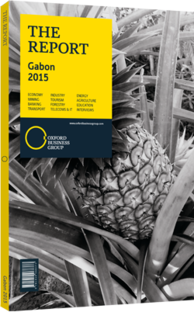Gabon trims its budget following oil price declines
A sharp drop in the price of oil has prompted Gabon to revise its expenditure plans. In light of decreasing revenues from its major export earner, authorities have started to take action. In early 2015, faced with oil prices of under $50 per barrel, the government organised a seminar to discuss the issue, announcing that a revision of the budget was in the works. The initial budget, published in October 2014, envisioned a total of CFA3.19trn (€4.78bn), an increase on the previous year’s budget of CFA2.95trn (€4.43bn). However, initial budgetary planning was based on oil prices of around $80 per barrel, which decreased significantly as 2014 progressed, hovering between $45 and $50 in early January 2015. Not only do lower oil prices reduce export earnings, they also reduce the flow of oil taxes into state finances.
Revising the Budget
In response to the adverse market conditions an ambitious revised budget was approved in early April 2015 that featured a 14% cut in government expenditure. The new 2015 budget was set at CFA2.65trn (€3.98bn), enforcing major cuts not only in capital spending but also in current spending, which will be set at CFA1.33trn (€2bn) in 2015, a CFA202bn (€303m) reduction, according to government figures. Cutting operational expenses, including public workers’ salaries and other expenditures such as equipment and services, will be challenging, given the legacy of industrial action in Gabon, where strikes by state workers occurred in 2014 and 2015.
Another measure that has recently been announced is the phasing out of subsidies for petrol and diesel, which accounted for 8.5% of the state’s budget in 2013, according to government figures. Subsidies on butane gas and lamp oil have been kept in place. If the cuts are maintained, they will help to address one of Gabon’s major barriers to growth. With close to half of the budget being spent on operational expenditures and a need to invest in infrastructure, state resources will have to be freed up for future developments.
Capital Spending
However, cuts will also impact the state’s investment budget, which was originally set at CFA596.7bn (€8.95bn), but was reduced by CFA47.1bn (€70.65m). Despite the need to cut spending, the government is still trying to keep a healthy level of investment in order to continue its infrastructure programme. Large-scale public spending has been a key driver of growth over the past five years, and the authorities are looking for ways to sustaining expenditures. “One way to solve this is by changing the financing strategy. Traditionally, investment projects in Gabon have been funded by public finances, and you might see a move towards more financing through debt, both through international institutions and the market,” Yves Picard, director at the French Development Agency, told OBG.
Debt
The past few years of economic growth have had a positive impact on infrastructure and the economy. But they have also led to mounting debt, which rose from 16% of GDP in 2011 to 28% in 2013, and is expected to reach 35% of GDP by 2016, according to IMF estimates. A considerable part of the problem is due to the country’s internal debt. Accumulation of arrears has hit the private sector hard.
In June 2015 the country issued a $500m, 10-year bond at 6.95%, roughly two years after it released a $1.5bn eurobond. The value of the issue was initially scheduled to be $1bn, but was reduced due to less favourable conditions, according to the IMF. Worsening financing conditions have already become apparent with the rise in the spread of the country’s 2013 eurobond by 200 base points between November 2014 and January 2015. Gabon’s credit conditions will certainly be impacted by the broader regional context, as a handful of other oil-producing nations seek international financing to make up for budgetary shortfalls. Although it is already requiring a rethink of its spending plans, Gabon should be able to sidestep a more dramatic worsening of its balance sheet.
You have reached the limit of premium articles you can view for free.
Choose from the options below to purchase print or digital editions of our Reports. You can also purchase a website subscription giving you unlimited access to all of our Reports online for 12 months.
If you have already purchased this Report or have a website subscription, please login to continue.

